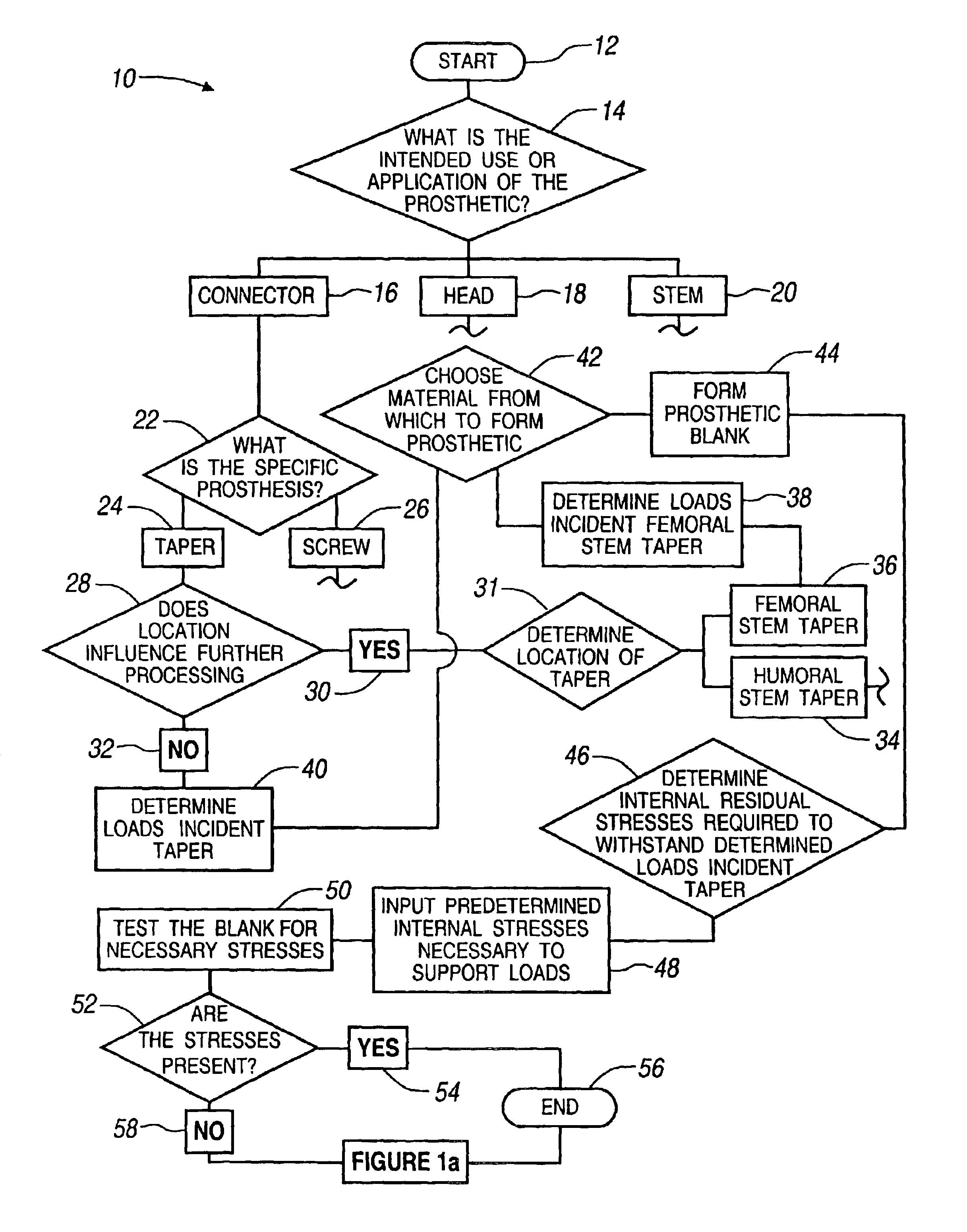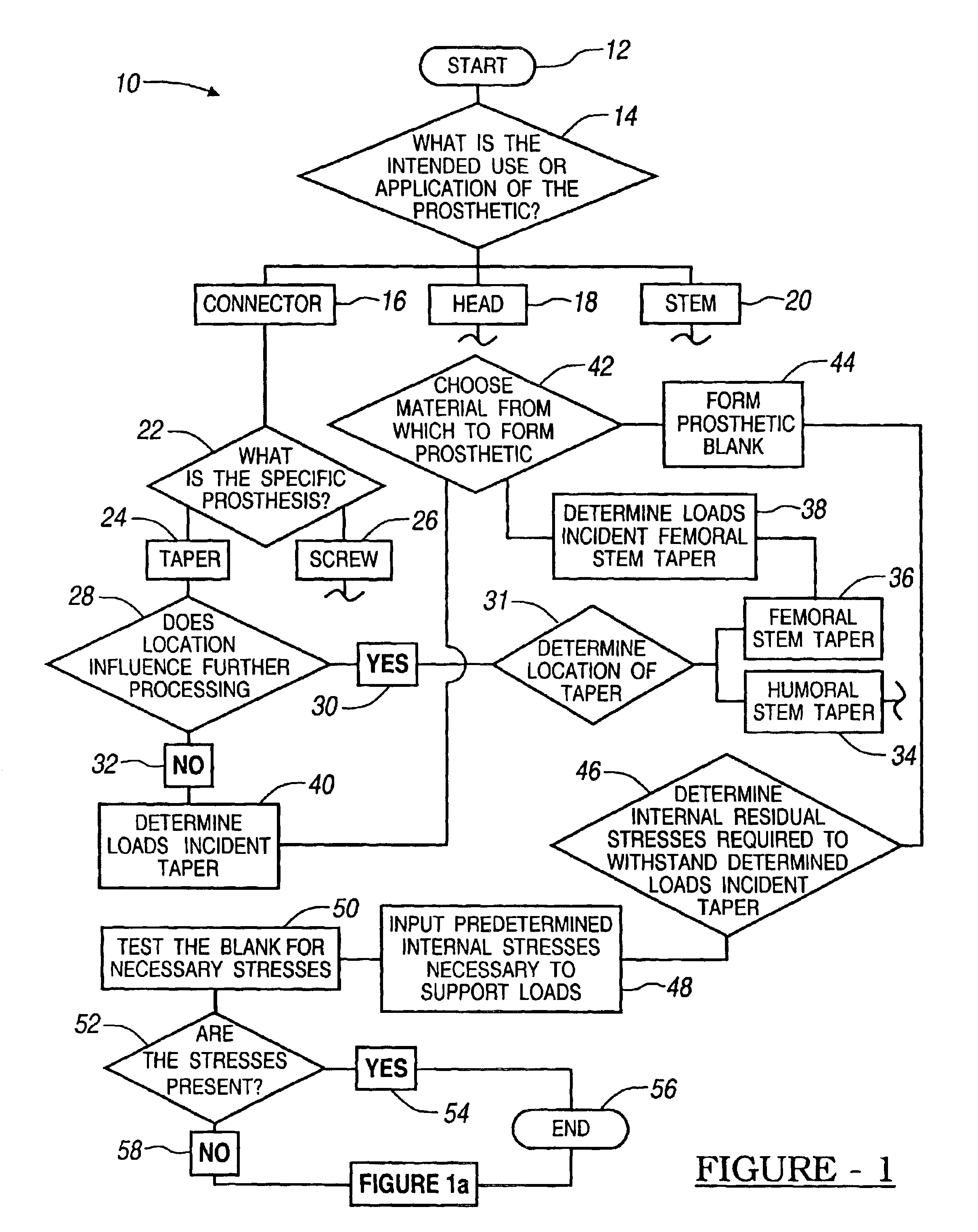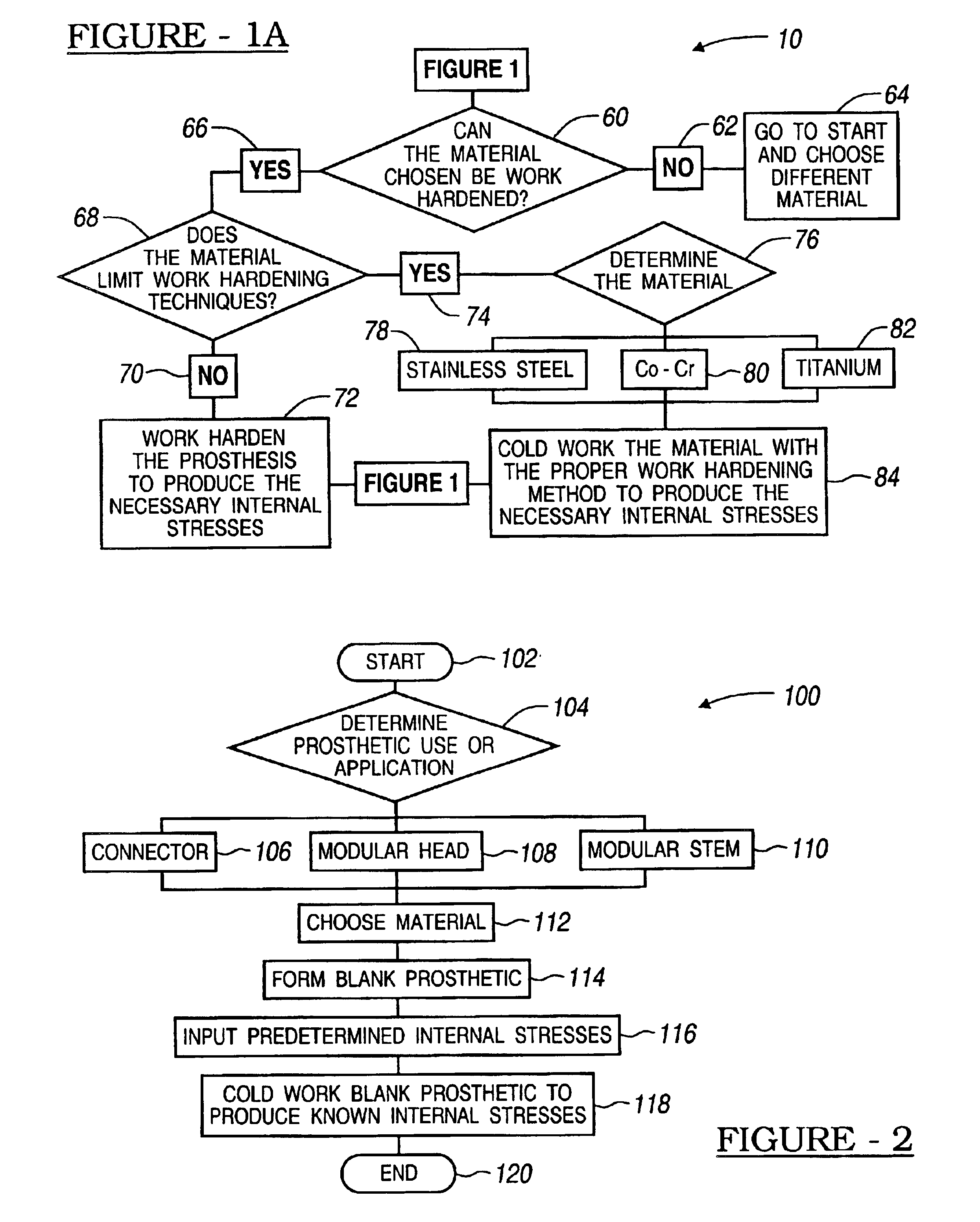Method for controlling residual stress in prosthetics
a residual stress and prosthetic technology, applied in the field of producing prosthetics, can solve the problems of large morse taper, inability to provide full or natural range of motion, and inability to fit into smaller bones, and achieve the effect of increasing the strength of smaller prosthetic devices and enhancing the strength of parts
- Summary
- Abstract
- Description
- Claims
- Application Information
AI Technical Summary
Benefits of technology
Problems solved by technology
Method used
Image
Examples
Embodiment Construction
[0024]The following description of the preferred embodiment(s) is merely exemplary in nature and is in no way intended to limit the invention, its application, or uses. Although the following description relates primarily to a Morse taper, it will be understood that the disclosed invention may relate to any portion of any prosthetic device requiring a certain internal residual stress, including other connection portions, bearing surfaces, etc.
[0025]With reference to FIG. 1, a prosthesis device production process 10 is illustrated in a flow chart. The process 10 may be used to produce any number of prosthetic devices for implantation. It will be understood, however, that the produced prosthetic devices may be implanted into any body which requires a prosthesis. The process 10 begins at a start block 12. Then a determination of a group or class prosthetic device to be produced occurs in decision block 14. General groups or classes of prosthetic devices include a connector 16, a head 1...
PUM
| Property | Measurement | Unit |
|---|---|---|
| residual internal compressive stresses | aaaaa | aaaaa |
| residual internal compressive stresses | aaaaa | aaaaa |
| depth | aaaaa | aaaaa |
Abstract
Description
Claims
Application Information
 Login to View More
Login to View More - R&D
- Intellectual Property
- Life Sciences
- Materials
- Tech Scout
- Unparalleled Data Quality
- Higher Quality Content
- 60% Fewer Hallucinations
Browse by: Latest US Patents, China's latest patents, Technical Efficacy Thesaurus, Application Domain, Technology Topic, Popular Technical Reports.
© 2025 PatSnap. All rights reserved.Legal|Privacy policy|Modern Slavery Act Transparency Statement|Sitemap|About US| Contact US: help@patsnap.com



